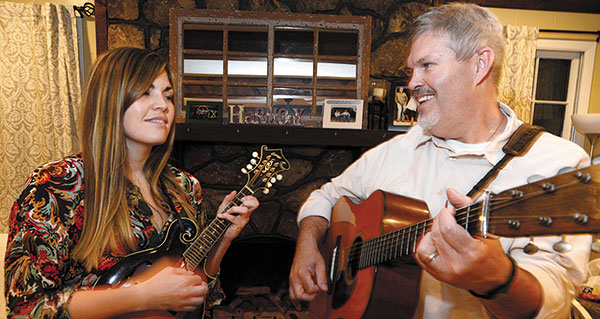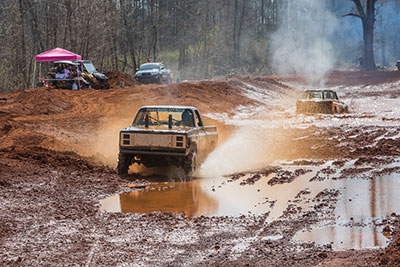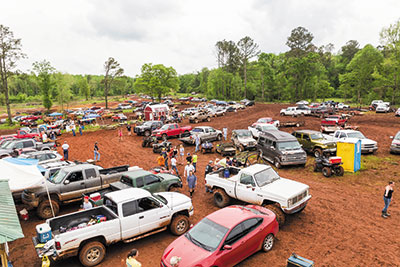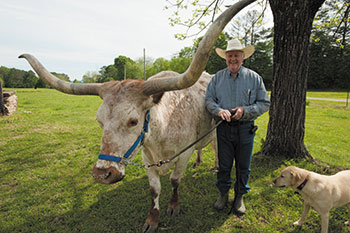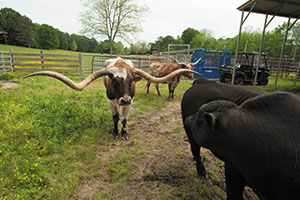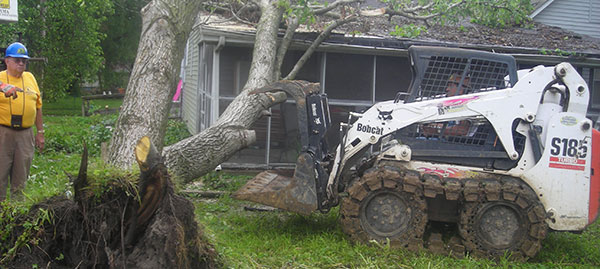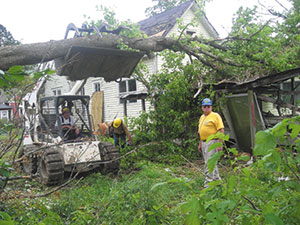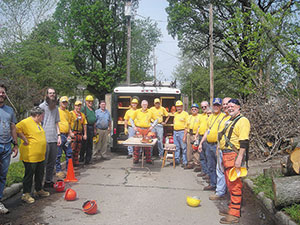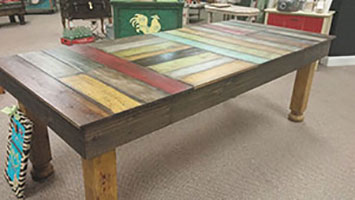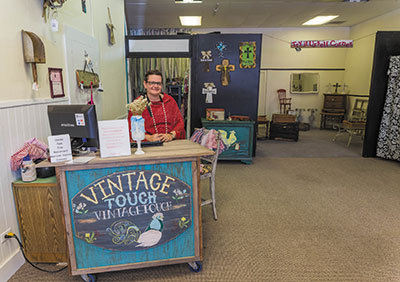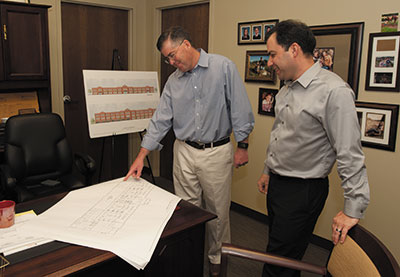 St. Clair teachers’ latest
St. Clair teachers’ latest
recording topping charts
Story by Jim Smothers
Photos by Jim Smothers,
Wallace Bromberg Jr.
and Graham Hadley
Their students may have noticed Shannon and Heather Slaughter were in an especially happy mood in mid-May, and it wasn’t just because the last day of school was approaching. This bluegrass performing couple just got word that their independent CD, Never Just a Song, had reached No. 1 on the National Roots Music Report for the week of May 13.
In their Facebook message to fans, the Slaughters said, “It’s our first number 1 on any chart, and we are really excited and feel really blessed.”
The traditional bluegrass song, Moonshiner, was the first single to be released after the album’s January release, and it’s gotten a lot of attention and airplay in the genre. But they’ll tell you quickly their favorite song on the disc is one they wrote together, The Best Thing We Ever Did.
It’s about their daughter, 2-year-old Rae Carroll Slaughter, who has changed their outlook on life and what’s really important in this world.
And it’s easy to see why. The adorable little girl inspired the lyric “She makes my day without saying a word,” and she is the center of their life together and their plans for the future.
About her
Shannon Slaughter was already a veteran performer and songwriter in traditional country and bluegrass music while Heather Sanders was playing electric bass with the youth band at her church in Argo in western St. Clair County.
She had a musical tradition in her family going back at least three generations. Her grandmother Ramona Carroll was part of a female vocal group that performed locally, and she hosted regular music nights in the basement of her store, Buckeye Grocery, near Argo.
Heather’s mom Robin was also a singer and bass player. She met Heather’s dad, Terry Sanders, when he came with his guitar to make some music with the people at the Carroll family store.
So it was no surprise that Heather could sing, but performing didn’t come naturally to her at first.
“My grandmother used to make me get up and sing at church,” she said, “and I was the shyest human being of all time.”
Her dad taught her to play guitar and mandolin, and she eventually conquered her shyness.
She made connections with Mike Toppins in Nashville and began work on her solo CD, I Meant It, and that’s what led to her first contact with Shannon.
A moderator with an Internet music site, Worldwide Bluegrass, knew Heather was ready to record, and wanted to help her along. The station had a message board, and the moderator sent Shannon a private message asking him if he had written any songs that would be good for a female singer, and he told him a little about Heather.
As any modern male would do, he looked her up on the Internet and found her photos on MySpace.
“She was really good-looking, so I replied, ‘Yeah, I think I have some songs for her,’ ” he said.
Heather recorded two of his songs on that CD, In My Heart, and Dying to Live Again.
The two communicated by email and telephone and really hit it off, but didn’t meet face-to-face at the time. Shannon was based in North Carolina where he was networked with a number of professionals in the industry. But Heather’s dad wasn’t sold on the idea of letting his daughter go out of state to meet a guitar-playing singer. The Internet station moderator didn’t like the idea, either. “She’s too young and innocent for the likes of you,” the moderator told Shannon when he asked for Heather’s phone number.
They didn’t have any more contact for two years.
“He left me high and dry,” Heather said. “Then I got home from a vacation, and there was an email waiting saying he wanted to see me.”
Meanwhile she joined the Gadsden-based band, Acoustic Rain, and played a number of shows across central Alabama. Shannon came down for a weekend to see her perform at Moonsong near Noccalula Falls in Gadsden.
“By the time I heard her sing five notes, I knew she was as good as anyone I had ever heard,” Shannon said. He sat in with the group for a couple of songs that night and stayed up all night singing with Heather. They hit it off so well in person, he extended his stay to spend more time with her, and they’ve been together ever since.
They swap lead vocals and support each other with silky smooth harmonies sure to please.
About him
Shannon is one of the better-known performers in bluegrass and classic country music today. Fans are quick to say he is “the real deal,” with his solid songwriting and guitar playing and friendly, soothing voice. He was raised in Chiefland, Fla., where he started performing while he was still in grade school. He started playing guitar when he was 8, and within two or three years he was singing at churches and livestock fairs and anywhere else people would listen.
As a teenager he met professional player Booie Beach at a Tony Rice concert and asked him if he would help him improve his playing. Beach taught Slaughter a lot of techniques and guitar licks that helped him on his way.
“We became lifelong friends,” Shannon said. He had played professionally already five to 10 years by that time.
“Two years later, Beach left the Larry Stephenson Band, and I took his place. Since he was my teacher, I already knew his licks, and I played my first two gigs with them without a rehearsal, and they told me, ‘You’ve got the job.’
During more than two decades of performing and recording, Shannon also played with Lost and Found, and for two years, he was the lead vocalist and guitarist for The Lonesome River Band. He was part of the Lou Reid and Caroline band, performed with Grasstowne and with Melonie Cannon, and he is also an award-winning songwriter.
But with all his experience and stature in the music industry, Shannon has kept his feet on the ground.
“There aren’t really any stars in this kind of music,” he said. “We’re just regular people.”
And they don’t have any intentions of quitting their day jobs. Both are school teachers. Heather is a special education teacher at Walter M. Kennedy Elementary School in Pell City and Shannon, a history teacher at St. Clair County High School in Odenville. He recently resigned from his additional duties as a football coach to be able to spend more time with his family.
“We want to keep on doing music, and we would like to have about 15 gigs a year,” he said.
Together
Alabama influences are making their way into the couple’s music, as reflected on their newest CD, Never Just a Song.
Back to Birmingham most obviously touches on Shannon’s new home state. Co-written with Heather and Dale Felts, they sing, “When I need to find out who I am, I go back to Birmingham.”
Less obvious is the Alabama connection in the song, Company Town. It’s about the lifestyle of a coal mining community in Margaret, where Heather’s grandfather once lived, the poverty the people endured, and how they lived together.
The sight of a farmer in bib overalls on Sanie Road between Argo and Odenville inspired the song, That’s What’s Good in America. It’s about “doing honest work for honest pay,” football, God and family.
The CD has 14 tracks, half of them written or co-written by Shannon.
You can find more about their music and CD online at shannonandheatherslaughter.com











